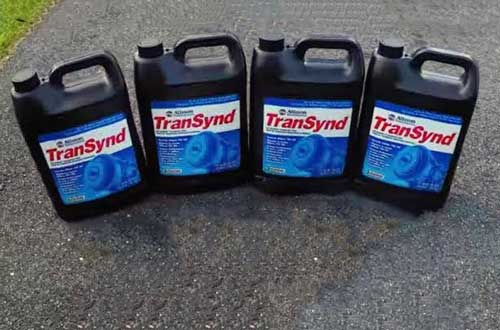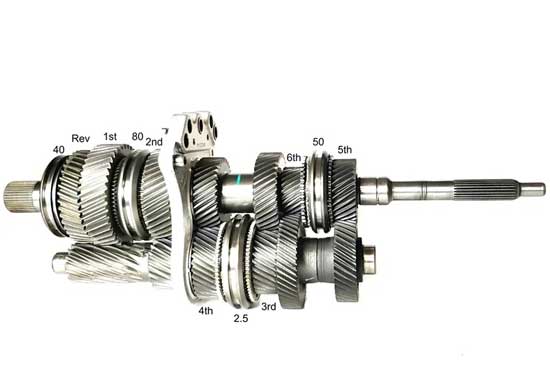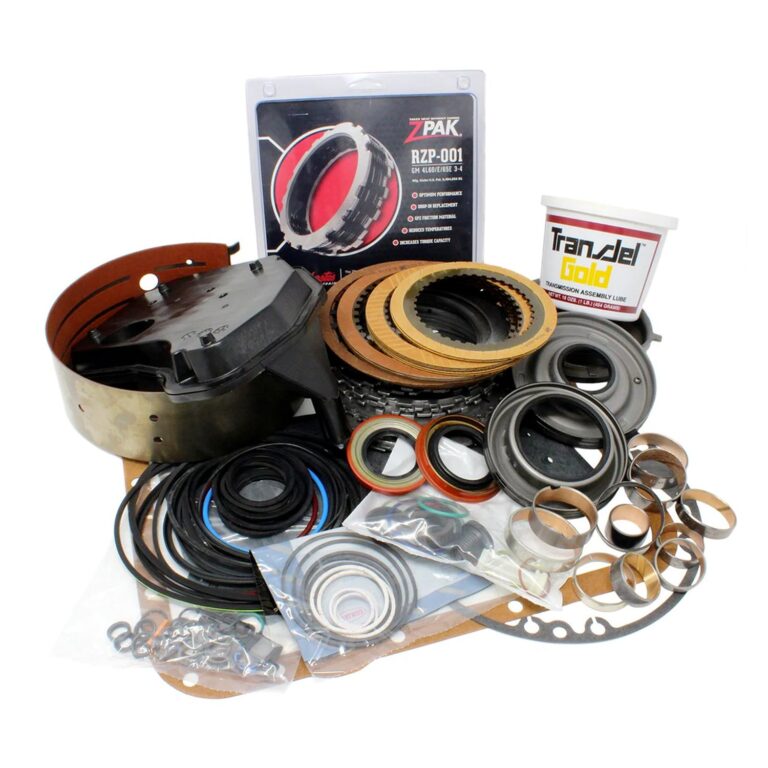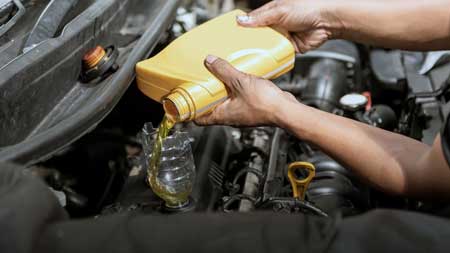Can You Add Transmission Fluid to a CVT Transmission? Explained.
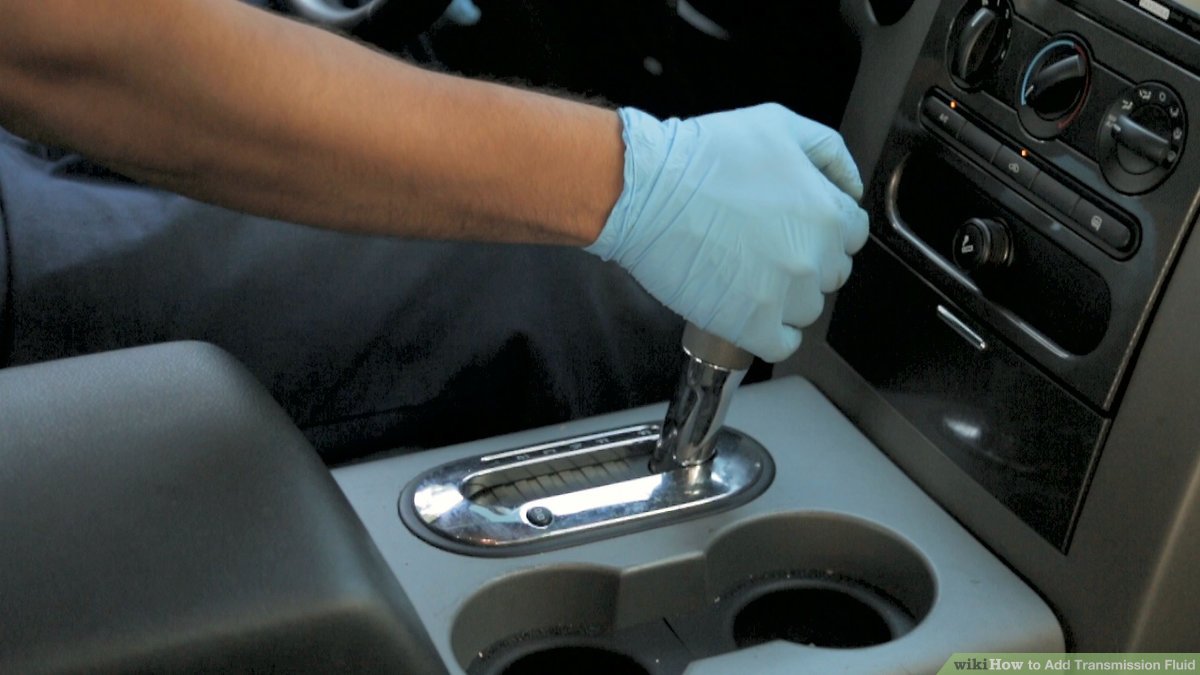
Yes, you can add transmission fluid to a cvt transmission. Cvt stands for continuously variable transmission, and they require a specific type of fluid.
Cvt transmissions are becoming more common in today’s vehicles. They provide a smoother ride and better fuel efficiency. The transmission fluid in a cvt transmission is essential for its proper functioning. It acts as a lubricant and coolant, ensuring the transmission runs smoothly.
If you notice any signs of low transmission fluid levels, such as difficulty shifting gears or strange noises, it’s important to add more fluid as soon as possible.
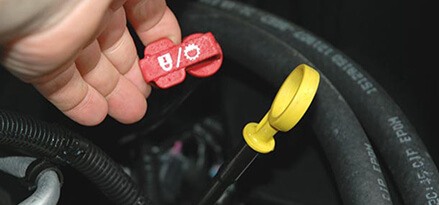
Credit: www.mobil.com
Understanding The Basics Of A Cvt Transmission
Can you add transmission fluid to a cvt transmission? Explained.
If you’re experiencing issues with your car’s transmission, especially if it’s a continuously variable transmission (cvt), you may wonder whether you can add transmission fluid in it without causing any damage. Understanding the basics of a cvt transmission can help you grasp how this complex component of your car operates and how to maintain it.
Definition Of A Continuously Variable Transmission (Cvt)
A continuously variable transmission (cvt) is a type of automatic transmission that can change seamlessly through a continuous range of gear ratios, allowing for a smoother acceleration and better fuel efficiency. Unlike conventional transmissions that use gears with a fixed number of teeth, cvts use a combination of pulleys, belts, and sensors to provide a variable gear ratio that can easily adjust the engine power and speed to the desired driving condition.
How A Cvt Transmission Works
To understand how a cvt transmission works, imagine two cones connected by a belt. One cone is the input, and the other is the output. Depending on the position of the cones, the distance between them varies, changing the radius of the belt and the gear ratio.
By adjusting the cones’ position and the tension of the belt, the transmission can fluidly vary the gear ratio to match the engine’s rpm and torque to the vehicle’s speed requirement.
Unique Characteristics Of A Cvt Transmission
Cvts have several unique characteristics that distinguish them from traditional automatic or manual transmissions.
- Efficient and smooth: Cvts can optimize the engine’s performance by constantly adjusting the gear ratio to the driving conditions, resulting in better fuel economy and a smoother ride.
- No shifting: Unlike traditional transmissions that shift between fixed gears, cvts continuously adjust the gear ratio, providing a seamless acceleration and deceleration, and eliminating the jerk associated with gear shifting.
- Durability: Cvts have fewer moving parts, which reduces the wear and tear on the transmission, increasing its lifespan and reducing repair costs.
- Complicated: The complexity of the cvt transmission requires specialized training and tools for maintenance, which can be more expensive.
Understanding the basic definition, how it works, and unique characteristics of a continuously variable transmission (cvt) is vital in maintaining your vehicle’s performance and longevity.
The Importance Of Transmission Fluid For A Cvt Transmission
Transmission fluid is an essential component of a continuously variable transmission (cvt). The cvt’s efficiency and longevity depend significantly on the quality of its transmission fluid.
Function Of Transmission Fluid In A Cvt Transmission
The primary function of transmission fluid in a cvt transmission is to lubricate the internal parts, including gears, bearings, and shafts, to avoid metal-to-metal contact. Additionally, it helps to transfer power between components, reducing friction and preventing excessive wear and tear.
Transmission fluid also helps to transfer heat away from the engine, ensuring that the transmission does not overheat.
In the case of cvt transmission, the fluid has another vital job, which is to operate a complex hydraulic system designed to keep the engine running smoothly and maintain the correct levels of power flow between the engine and wheels.
Importance Of Regular Transmission Fluid Maintenance
Cvt transmissions, just like any other transmission system, require regular fluid maintenance to function correctly, which involves checking and replacing the transmission fluid, as appropriate. Regular fluid maintenance intervals will vary depending on the car make and model, but it will typically range from 30,000 miles to 60,000 miles, or every two to four years.
A qualified automotive technician can accurately diagnose whether the transmission fluid requires immediate attention, based on various factors, including the vehicle’s age, driving habits, and maintenance history.
Signs Of Low Transmission Fluid Levels
Failing to maintain the proper levels of transmission fluid can have dire consequences, leading to a decrease in the transmission’s longevity and performance. Therefore, it’s essential to be aware of some red flags that may indicate a low transmission fluid level, including:
- Difficulty in shifting gears
- Whining or grinding noise during acceleration or deceleration
- Irregular or delayed shifting
- Increased engine temperature
- Transmission slippage
The smooth performance and long lifespan of a cvt transmission depend significantly on the quality and maintenance of its transmission fluid. Regular maintenance of the transmission fluid will ensure the proper functioning of the transmission and minimize the risk of serious and costly damage.
How To Check Transmission Fluid In A Cvt Transmission
Can you add transmission fluid to a cvt transmission? Explained.
A cvt (continuously variable transmission) is a type of automatic transmission commonly found in modern cars. It utilizes pulleys and belts to constantly vary gear ratios, providing smooth and efficient acceleration. Like any other type of transmission, a cvt requires regular maintenance, including checking and replacing the transmission fluid.
Step By Step Guide To Checking Transmission Fluid
Checking the transmission fluid level in a cvt transmission is a simple process that can be done by anyone. Here’s a step-by-step guide:
- Park your car on a level surface and turn the engine on. Let the engine run for a few minutes to allow the transmission to warm up.
- Locate the transmission dipstick. It is usually located near the engine oil dipstick, but it may vary depending on the car model. Consult your user manual if you can’t find it.
- Pull out the dipstick and wipe it clean using a lint-free cloth.
- Reinsert the dipstick all the way in and pull it out again.
- Check the fluid level against the markings on the dipstick. If the level is below the “add” or “min” line, you need to add more fluid.
- Add the appropriate type of transmission fluid, as specified in your owner’s manual, using a funnel to avoid spills. Avoid overfilling the transmission, as this can cause damage in the long run.
- Recheck the fluid level and close the dipstick cap.
Common Mistakes When Checking Transmission Fluid
While checking transmission fluid seems like a straightforward task, there are common mistakes that people make which can result in costly damage to the transmission. Here are some of those mistakes:
- Not warming up the engine: It is important to let the engine run for a few minutes before checking the transmission fluid level. This ensures that the fluid is at the right temperature and properly distributed across the transmission.
- Overfilling the transmission: Adding too much transmission fluid can cause the fluid to foam, leading to erratic shifting, overheating, and other problems.
- Using the wrong type of fluid: Using the wrong type of transmission fluid can cause damage to the transmission and lead to costly repairs. Always consult your user manual to determine the appropriate type of fluid for your car.
- Not checking the fluid level frequently: It is important to check the transmission fluid level at regular intervals, as low fluid levels can lead to poor performance, transmission wear, and damage.
How To Add Transmission Fluid To A Cvt Transmission
Step By Step Guide To Adding Transmission Fluid
Adding transmission fluid to a cvt transmission is a simple yet essential task that every car owner should know how to do. Here’s a step-by-step guide on how to efficiently add transmission fluid and keep your vehicle’s transmission running smoothly.
- Step 1: Locate the transmission fluid dipstick – to add transmission fluid, you will need to locate the cvt transmission fluid dipstick, which is usually labeled and placed near the engine.
- Step 2: Check the fluid level – before adding transmission fluid, check the fluid level by removing the dipstick, wiping it with a cloth, inserting it back into the transmission, and pulling it out again. Check to see if the fluid level falls between the minimum and maximum marks.
- Step 3: Add the correct type of fluid – if the fluid level is low, it’s time to add the correct type of transmission fluid required for your vehicle. Consult your owner’s manual or service manual for the proper type of fluid to use.
- Step 4: Add the fluid – add the transmission fluid in small quantities using a funnel, checking the dipstick after each addition to ensure you do not overfill it. Continuously check the fluid level until it reaches the recommended level between the minimum and maximum markings.
- Step 5: Recheck the fluid level – after adding the transmission fluid, replace the dipstick, start the engine, and check the dipstick once again to ensure proper fluid levels are maintained.
Importance Of Using The Correct Type Of Fluid
Using the correct type of transmission fluid plays a vital role in the performance and longevity of your vehicle’s transmission. Here are some reasons why:
- Transmission fluid serves as a coolant and lubricant in the transmission system. Without the proper type of fluid, transmission components may experience wear and tear, eventually causing total transmission failure.
- Using the wrong fluid can lead to poor shifting, slipping, and overheating, which can compromise the safety of your vehicle and result in expensive repairs.
- Different types of vehicles require different types of transmission fluids, and using the wrong type can void the manufacturer’s warranty.
Precautions When Adding Transmission Fluid
While adding transmission fluid is a simple task, it’s essential to take precautions and ensure your safety and your car’s safety. Here are some precautions to take:
- Always add the transmission fluid in small quantities to avoid adding too much and overfilling the transmission.
- Use a funnel to prevent spilling fluid on the engine or any other part of the vehicle.
- Wear gloves and protective gear to protect yourself from contact with the fluid.
- Make sure the vehicle is on level ground to prevent incorrect readings when checking the fluid levels.
- Always use the recommended type of transmission fluid for your vehicle to prevent any mechanical failures and voiding the warranty.
Frequently Asked Questions About Cvt Transmission And Transmission Fluid
Can you add transmission fluid to a cvt transmission? Explained.
Cvt transmissions are growing in popularity due to their fuel efficiency and smoother driving experience. However, with any transmission type, there are questions about maintenance and care. In this post, we’ll explore some of the most frequently asked questions about cvt transmission and transmission fluid.
Can You Drive With Low Transmission Fluid?
Absolutely not! Low transmission fluid levels can result in severe damage to your cvt transmission, leading to expensive repair costs. Driving with low transmission fluid can cause overheating and an increased risk of transmission failure. It’s essential to regularly check your transmission fluid levels to avoid any potential issues.
Here are some signs that your transmission fluid is low:
- A whining or buzzing sound when shifting gears
- Problems shifting gears or staying in gear
- Delayed engagement or lack of response when shifting
- A burning smell coming from your transmission
If you notice any of these symptoms, check your transmission fluid and fill it immediately if necessary.
What Happens If You Use The Wrong Transmission Fluid?
Using the wrong transmission fluid can lead to significant problems in your cvt transmission. It is critical to verify the correct transmission fluid type and weight for your vehicle before adding or replacing any fluid. If you use the wrong fluid, it can cause:
- Excessive heat and friction
- Wear and tear on transmission components
- Slipping gears or delayed engagement
- Reduced fuel efficiency
How Often Should You Change Transmission Fluid In A Cvt Transmission?
It’s crucial to follow your vehicle’s manufacturer-recommended maintenance schedule when it comes to transmission fluid changes. Cvt transmissions require different maintenance than traditional automatic transmissions. Here are some general guidelines for changing transmission fluid in a cvt transmission:
- Check your vehicle owner’s manual to determine the recommended maintenance schedule.
- Most manufacturers suggest replacing your transmission fluid every 60,000 to 100,000 miles.
- Cvt transmissions require a specific type of transmission fluid, so make sure to use the correct fluid type and weight.
Frequently Asked Questions Of Can You Add Transmission Fluid To A Cvt Transmission
Can You Add Transmission Fluid To A Cvt Transmission?
Yes, you can add transmission fluid to a cvt transmission. However, it’s essential to use the recommended type and quantity of fluid for your specific model to prevent any possible harm.
How Often Should You Add Transmission Fluid To A Cvt Transmission?
Cvt transmissions typically do not need frequent fluid changes, unlike traditional transmissions. Nevertheless, it’s still vital to check your fluid levels regularly and top them up when needed to avoid transmission damage.
Can You Change The Transmission Fluid In A Cvt Transmission?
Yes, you can change cvt transmission fluid, but it is recommended to follow the manufacturer’s guidelines. Changing the fluid requires more care and the specific fluid recommended should be used to prevent damage to the transmission.
What Happens If You Drive With Low Transmission Fluid In A Cvt Transmission?
Low transmission fluid can lead to a decrease in transmission performance, leading to problems such as slipping, overheating, or stalling. Continued driving with low fluid levels can cause significant damage to the transmission, resulting in costly repairs.
How Much Will It Cost To Add Transmission Fluid To A Cvt Transmission?
The cost of adding fluid to a cvt transmission varies depending on the type of vehicle and the type of fluid recommended. It is generally an inexpensive procedure. Nonetheless, it is essential to check with a professional to confirm the recommended fluid and price.
Conclusion
Adding transmission fluid to a cvt transmission might seem like an easy task, but it is important to proceed with caution. As we have discussed, different types of cvt transmissions have different requirements. Some need special types of fluid, and others may require different levels of topping off.
Not to mention, the process of adding transmission fluid to a cvt can be tricky and requires precision. However, with proper research and a clear understanding of your vehicle’s needs, you can successfully add transmission fluid to your cvt transmission and keep it running smoothly.



